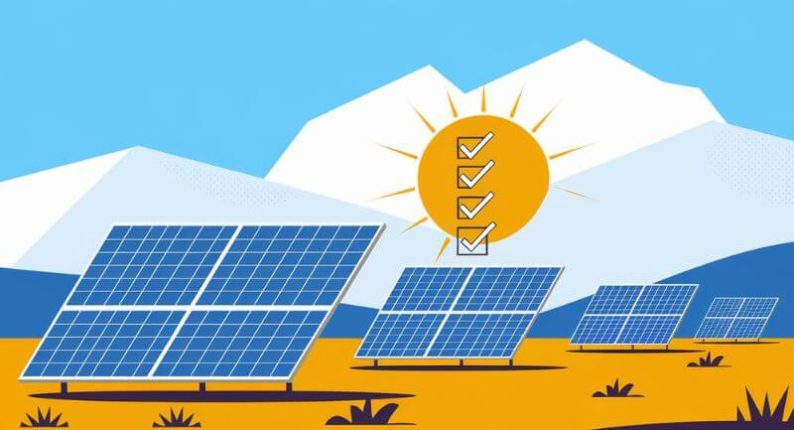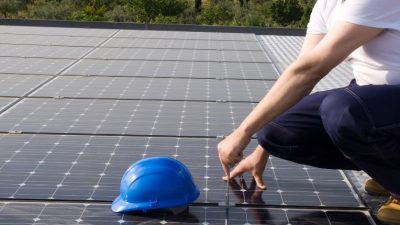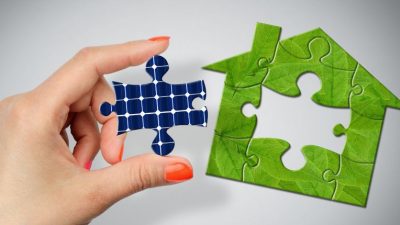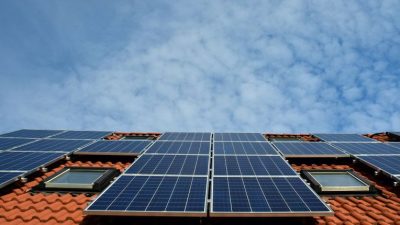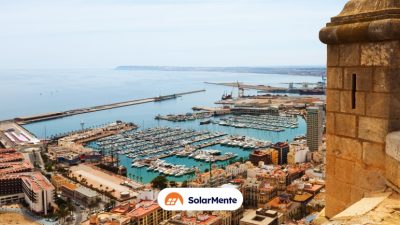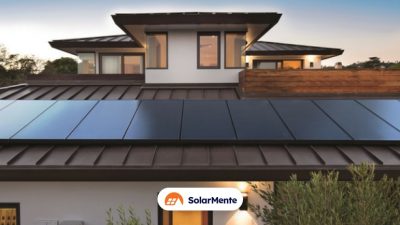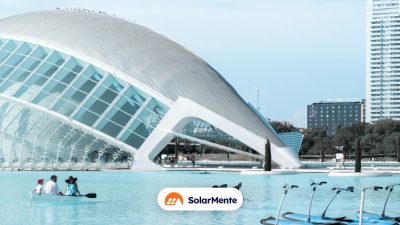Photovoltaic energy has experienced exponential growth in recent years, not only for its environmental benefits, but also for its ability to considerably reduce energy bills. More and more people and companies are opting for self-consumption of electricity, taking advantage of solar energy to meet their energy needs.
This article provides a detailed guide on how to legalise a PV installation, the steps to follow, the regulatory requirements, the costs involved and the benefits that can be gained from having a fully regularised installation.
Why is it important to legalise a photovoltaic installation?
The legalisation of a photovoltaic installation is a mandatory step for it to be able to operate formally and safely. Failure to legalise an installation can have significant consequences, ranging from fines and administrative sanctions to the impossibility of selling the surplus energy generated by the installation.
In addition, installations that are not legalised are not eligible for available subsidies or tax incentives, which can be key to reducing initial installation costs. In some cases, insurance companies may also refuse to cover an unregistered installation in the event of an accident or damage.
Finally, it is important to note that a legalised PV installation contributes to the safety of the electricity system in general, as it ensures that all technical and regulatory requirements are met. This prevents grid saturation and ensures that installations comply with safety and energy efficiency standards.
Process of legalisation of a photovoltaic installation
Initial assessment and technical project
The first step in legalising a photovoltaic installation is to draw up a technical project, carried out by a competent technician, who may be an engineer or architect specialised in electrical or energy installations. This project is essential to ensure that the installation complies with all the technical and safety requirements demanded by current regulations.
The technical project must include a detailed design of the PV system, including aspects such as the sizing of the solar panels, the inverter capacity, the grid connection, and the storage system, if applicable. In addition, a precise calculation of the power to be generated by the installation and how it will be distributed or fed into the grid must be made.
In this step, the location of the panels, their orientation, inclination and any possible obstacles that may affect the efficiency of the installation are also taken into account. Local planning regulations are also assessed to ensure that the installation is permitted in the desired location.
Obtaining prior permissions
Once the technical project has been drawn up, the next step is to apply for the necessary permits from the local authorities. In most cases, it will be necessary to obtain a building permit from the local council, although this will depend on the size and type of installation.
For small installations, such as domestic self-consumption without surplus, this step may be optional or simplified in some municipalities. However, for larger installations or in rural settings, the requirements may be more stringent and additional permits, such as environmental impact reports, may be required.
It is important to ensure that all permits are in order before proceeding with the installation, as an unauthorised installation could be subject to fines or decommissioning requirements by the authorities.
Certificate of Electrical Installation (CIE)
Once the photovoltaic installation is fully installed, it is necessary to obtain an Electrical Installation Certificate (CIE). This certificate guarantees that the installation has been carried out in accordance with the regulations and that it complies with all safety standards.
The CIE must be issued by an authorised electrical installer, who will check the system to ensure that it is in optimum operating conditions. This document will be essential to complete the legalisation of the installation and for its connection to the electricity distribution network.
In addition to the EIC, the installer must submit a technical report of the installation and the electrical diagrams of the system, which are essential documents for the registration of the installation with the competent authorities.
Registration in the self-consumption register
Once the permits and the Electrical Installation Certificate (CIE) have been obtained, the next step in the legalisation process is to register the installation in the self-consumption administrative register of the corresponding autonomous community. This registration is mandatory and ensures that the installation is officially recognised as part of the self-consumption electricity system.
The registration process is usually carried out through a digital platform enabled by the autonomous community and may vary slightly depending on the region. During this step, it is necessary to provide all the technical and legal documentation related to the installation: the technical project, the CIE, the permits obtained and other documents that accredit the legality of the installation.
The deadline to complete this registration is usually limited after obtaining the EIC, so it is advisable to complete this procedure as soon as possible to avoid possible penalties. In addition, registration is essential for accessing surplus compensation if you choose to feed surplus energy into the grid.
Signing of the contract with the electricity distribution company
In the case of installations with surpluses that wish to feed the surplus energy generated into the electricity grid, it is essential to sign a contract with the electricity distributor. This contract establishes the terms and conditions for the compensation of surplus energy, allowing the owner of the installation to receive a payment or discount on his electricity bill for the energy that is not consumed and that is injected into the grid.
The process of signing this contract usually involves submitting documentation of the installation and verifying that it meets the conditions to be able to feed energy into the grid. The electricity distributor must also ensure that the system is safely connected and that it does not pose a risk to the general grid.
In small self-consumption installations with surpluses, compensation is usually done through a simplified system, where the owner receives a monthly discount on his bill. In larger or industrial installations, more complex power purchase and sale contracts with customised tariffs may be established.
Technical and regulatory requirements
For a PV installation to be considered legal and operational, it must comply with a number of technical and regulatory requirements set out in Spanish legislation. Some of the main requirements include:
- Maximum power: In the case of self-consumption installations without surpluses, current regulations(Royal Decree 244/2019) establish that those with a power of less than 15 kW do not require such complex procedures. However, for higher capacities, the legalisation process is more rigorous, requiring greater technical and regulatory controls.
- Applicable regulations: The key regulation governing self-consumption installations is Royal Decree 244/2019. This decree establishes the technical, administrative and economic conditions for self-consumption in Spain. It covers aspects such as registration, compensation of surpluses and the obligations of the owner of the installation.
- Maintenance: Photovoltaic installations should be checked regularly to ensure that they are functioning properly and meet safety requirements. It is important to follow a preventive maintenance plan to avoid technical problems that could affect the efficiency or safety of the system.
Complying with these requirements not only ensures the legality of the installation, but also maximises its efficiency and durability, ensuring that the investment made in the installation is maximised.
Documentation required for legalisation
To complete the legalisation process of a photovoltaic installation, it is necessary to have a series of key documents that prove that the installation has been carried out in accordance with current regulations. These documents include:
- Technical project: The design and technical specifications of the installation, drawn up by a competent technician.
- Electrical Installation Certificate (CIE): This certifies that the installation complies with safety regulations and has been carried out by an authorised installer.
- Building permits: If required, the building permit issued by the municipality must be presented.
- Contract with the electricity distribution company: In the case of installations with surpluses, it is necessary to present the compensation contract with the distribution company.
- Additional documentation: In some cases, environmental impact reports or specific authorisations may be required if the installation is on rural land or in protected areas.
Special cases
The legalisation process of a PV installation can vary depending on the specific characteristics of the installation and the location. Two special cases that require particular attention are detailed below.
Legalisation of installations on rural land
Photovoltaic installations on rural land have a number of legal particularities that need to be carefully considered. In many cases, local and regional regulations restrict the activities that can be carried out on rural or protected land, and this may include the installation of solar panels.
In general, installation on rural land can be allowed as long as it is intended for self-consumption and does not interfere with the agricultural or landscape activity of the land. However, it is necessary to obtain special authorisations, such as environmental impact reports and specific permits for this type of land.
In addition, the autonomous communities usually require a study on the technical feasibility and visual impact of the installation on these lands. It is recommended to consult with the local town hall or a specialised technician to ensure that all requirements are met before starting the installation.
Collective installations
In the case of collective installations, such as those carried out in neighbourhood communities, there are additional regulations and procedures that must be taken into account. Royal Decree 244/2019 specifically regulates collective self-consumption, allowing several users to share the same photovoltaic installation and share the benefits of the energy generated.
In order to legalise a collective PV installation, it is necessary for all owners or users involved to reach a formal agreement on the installation and its maintenance. This agreement must include how the energy generated will be distributed and how the cost of the installation and its maintenance will be shared among the users.
In addition, each user must sign an individual contract with the electricity distributor for the compensation of surpluses, if they wish to feed energy into the grid. It is also necessary to register the installation as collective self-consumption on the platform of the autonomous community, presenting the documentation of all participants.
Benefits of a legalised photovoltaic installation
Having a legalised PV installation offers a number of economic and environmental benefits. Some of the most important of these are described below:
- Savings on electricity bills: One of the main advantages of photovoltaic self-consumption is the significant reduction in energy costs. By generating your own electricity, you reduce your dependence on the grid, which translates into immediate savings on your electricity bill.
- Compensation for surpluses: Legalising the installation allows access to surplus energy compensation, which consists of receiving a discount on the electricity bill for the unconsumed energy that is injected into the grid. This compensation mechanism can make the return on investment faster.
- Access to grants and subsidies: There are numerous grants and subsidies available, both at state and regional level, to promote energy self-consumption. Only legalised installations can access these economic benefits, which can considerably reduce the cost of the installation.
- Increase in the value of the property: Having a legalised and functioning photovoltaic installation can increase the value of a property, as it represents a source of energy savings for future buyers.
- Contribution to sustainability: By legalising a photovoltaic installation, you contribute to the transition towards a more sustainable and environmentally friendly energy model. Solar energy is a clean energy source that helps to reduce CO₂ emissions and mitigate climate change.
- Safety and regulatory compliance: Legalising the installation ensures that it complies with all safety and energy efficiency standards established by regulations. This reduces the risk of accidents and technical problems, as well as avoiding possible penalties or fines for non-compliance.
The legalisation of a photovoltaic installation is a fundamental step to guarantee its correct operation and ensure that all the benefits it offers can be taken advantage of. Although the legalisation process may seem complex, by following the right steps – from drawing up the technical project to signing the contract with the distributor – it can be completed without major inconveniences.
If you are thinking of installing a photovoltaic self-consumption system, do not hesitate to find out about the legal requirements and start the legalisation process as soon as possible to take advantage of all the benefits of self-consumption.
10. FAQs (Frequently Asked Questions)
Is it compulsory to legalise a small photovoltaic installation?
Yes, any photovoltaic installation, regardless of its size, must be legalised in order to comply with current regulations and to be able to access the benefits of self-consumption, such as compensation of surpluses or subsidies and grants.
How long does the legalisation process take?
The time required to legalise a PV installation can vary depending on the region and the complexity of the installation. In general, it can take between one and three months, depending on how quickly the permits are obtained and the administrative registration is completed.
Can I legalise an installation that is already in operation?
Yes, it is possible to legalise a PV system that is already in operation, although the process can be more complex. It is important to consult a specialised technician to ensure that the installation complies with all regulatory requirements before proceeding with legalisation.
At SolarMente, we take care of the entire process so that you can enjoy a fully legalised photovoltaic installation ready to generate savings. From drawing up the technical project to registration in the official registers, we manage all the formalities for you. Our team of solar energy experts is at your disposal so that you can enjoy self-consumption without any worries, ensuring that your installation complies with all current regulations. Trust us and start saving with solar energy quickly, safely and efficiently!

